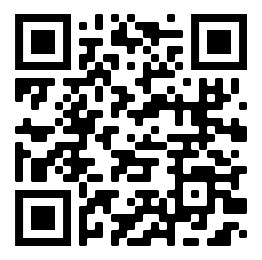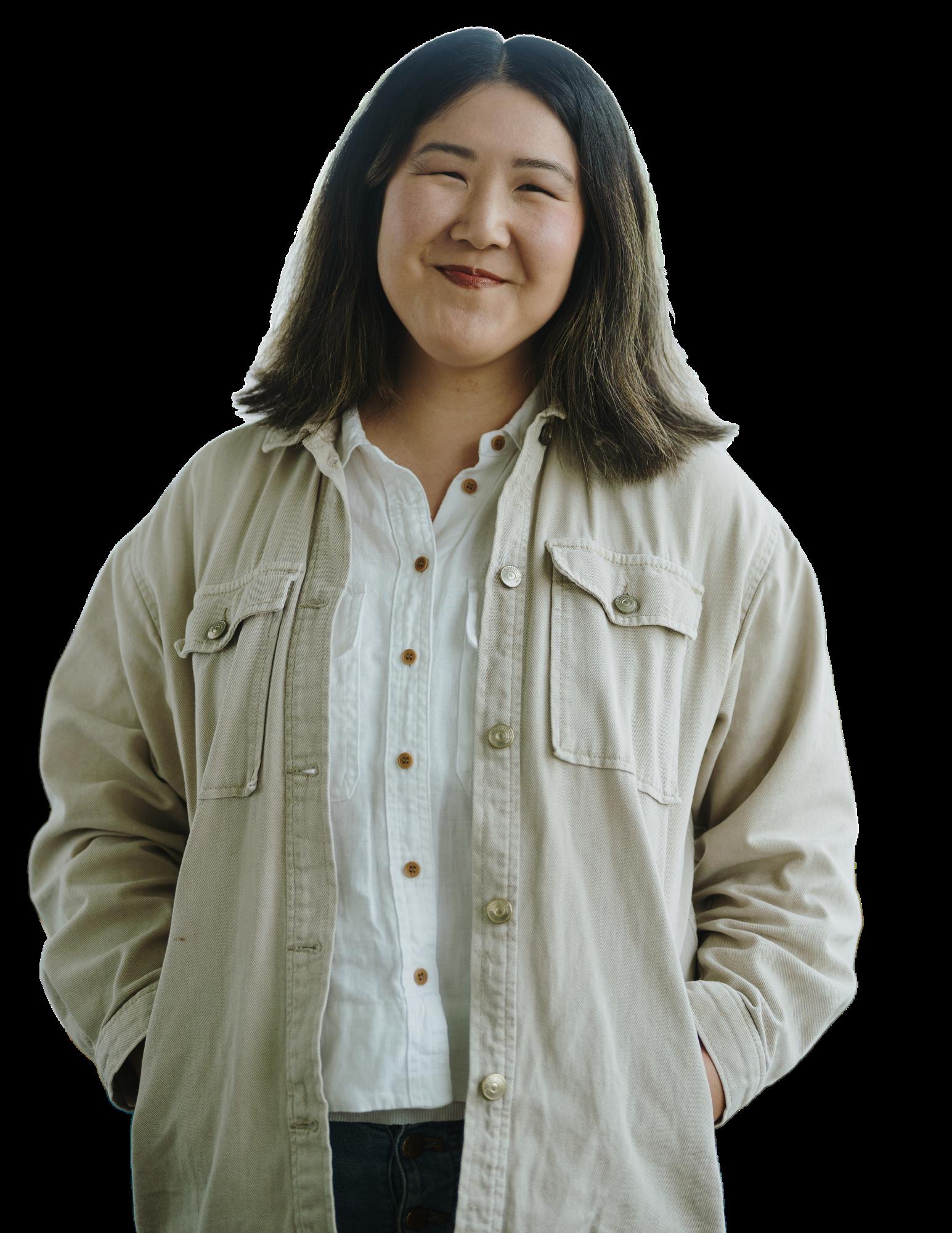By the students, for the students

Brandon Mattesich Co-Editor-In-Chief
CWU’s University Administrative Leadership Team (UALT) and shared governance leaders recently held a meeting to plan for the 2025-2027 biennium budget. The meeting, which happened just over two weeks ago, had two main goals as stated in an email from President Jim Wohlpart.
The first goal was, “To celebrate the very good and hard work all of you have done in managing a structural deficit caused mostly by lower enrollment and by how the state has funded wage increases. That deficit is about $15 million over several years,” Wohlpart said in his email. “The primary process we have used to adjust to this deficit has been to reduce our number of employees, which has strained our ability to get our work done. These staffing reductions have also had an effect on morale, but overall, we have done a good job of managing this challenge by working together.”
The second goal was, “To address this question: Can we continue down this same path if we receive insufficient funding for wage increases and if the governor’s budget — which includes a 3% reduction — prevails? Or should we shift to an alternative path, and
AFFECT CWU STAFF, STUDENTS, AND ALUMNI
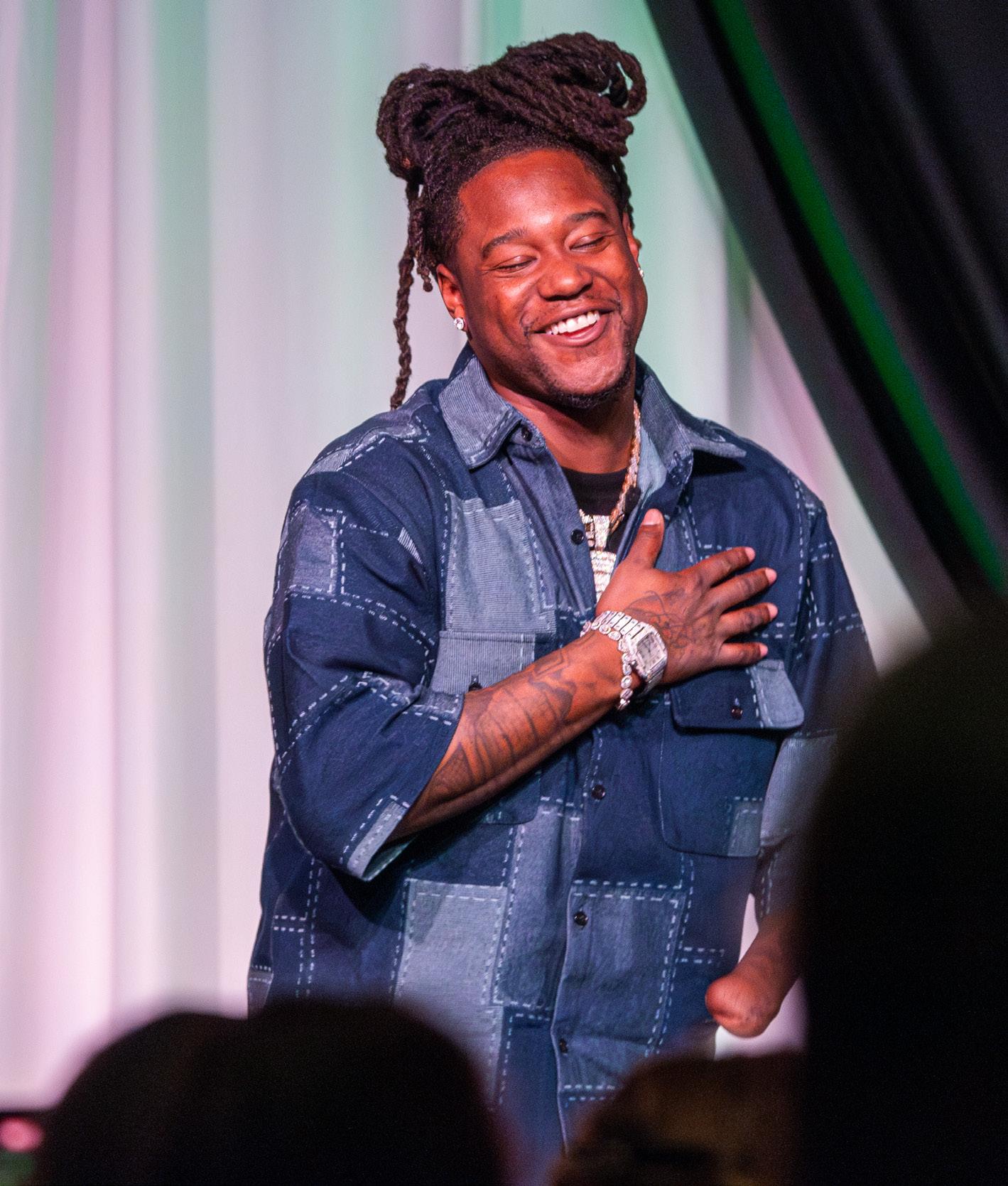
what would that path look like?”
The Observer reached out to Joel Klucking, CWU’s Senior VP for Finance & Administration, with questions surrounding the meeting. The following is a Q&A, conducted via email, as requested by Klucking.
Q&A edited for length and clarity.
Q: The email stated that this is the second meeting of its kind. How are meetings like this handled, and how did this second one come together almost 3 years later?
A: These meetings are intended to hear from our students and employees across the university through their shared governance leadership at important moments in the university’s history. We invited leadership from faculty senate (we have 55 senators who they represent), leadership from our unions, exempt staff and classified staff (who have councils that they lead of several individuals each) and leadership from our students.
ON PAGE 3
FROM
PAIN TO
PURPOSE. FROM DREAMS TO REALITY SHAQUEM GRIFFIN TALKS OVERCOMING ADVERSITY
Jackson Roberts Co-Editor-In-Chief
Former Seattle Seahawk and National Football League (NFL) icon Shaquem Griffin paid a visit to CWU on Feb. 13 to share a message entitled “From Pain to Purpose. From Dreams to Reality.” Students and staff packed the SURC ballroom as Griffin detailed his journey to the NFL and spoke on ways to overcome adversity. Griffin made history as he was the NFL’s first-ever one-handed player. He was born with a rare condition called amniotic band syndrome which led to immense pain in the left hand. Eventually, when he was four years old, the pain became strong enough that his mother found him with a kitchen knife attempting to cut the digits on his hand off. At that point, it was clear to the Griffin family that if they wanted their son to be free of this pain, it meant they had to amputate his hand.
Growing up his family never treated him any different from his identical twin brother Shaquill. Griffin emphasized his family’s message of never letting him say he can’t do something and to not let his condition be an excuse or hold him back from what he
wanted to do.
He and his brother would eventually find their way to the University of Central Florida (UCF) where he was faced with even more adversity there. He watched his brother play cornerback for the school as he was buried in the depth chart and even had his scholarship revoked.
“My brother made a lot of sacrifices for me. My first three years of college, I didn’t play and got kicked out of school,” Griffin said in an interview with the Observer Thursday before the event. “The coaches wanted to see if my brother could do well without me. He [Coach] didn’t think football was a fit. So now I’m at home working two jobs not knowing about my opportunity to even get back into football let alone school. I’m on a full-ride scholarship and everything was just taken away.”
The brothers have always been a package deal. Griffin mentioned during the event that growing up, the twins wanted to do everything with each other, whether it was playing on the same team or hoping they would one day also marry identical twins.
CONTINUED ON PAGE 4

BEYOND OUR COVERAGE
LOCAL: “Accused murder takes witness stand in his own defense” (via the Daily Record)
“Ellensburg church to honor Black History Month with special music program” (via the Daily Record)
NATIONAL: “White House defends blocking AP from event for using ‘Gulf of Mexico’” (via NPR)
“Trump administration fires thousands of U.S. Forest and National Park Service workers” (via CBS News)
INTERNATIONAL: “Russia and US agree to work toward ending Ukraine war in a remarkable diplomatic shift” (via AP News)
“February 17, 2025: Delta Air Lines plane crashes in Toronto, Canada” (via CNN)
Corrections from previous issue
Nicole Caveness and Marina Leininger had their attributions swapped on the section “Wildcat Words”
LETTER from the EDITORS
Brandon: This is the first 16 page issue under my time as editor in chief! I am super proud we finally made it happen, and I cannot wait to see this bad boy hit the stands. As far as writing goes, I did a lot of it this week, and I am happy to be reporting on things that matter to me. From music to finances we have a little bit of everything in this week’s issue.
Jackson: Wow, what a week! I had the opportunity to cross something off my journalism bucket list as I sat down and had an awesome interview with former Seattle Seahawk Shaquem Griffin. Also, we got our first 16 pager this week which I could not be happier to bring to you. A lot of great stuff in this issue and I hope you all have as much fun reading it as we did putting it together.
Issue 6 Recap
The news section did a lot of writing this week. Covering CWU’s financial plans, Ellensburg High Schools issues with discrimination and a follow up on the hooding ceremony story from our past issue. If

you go to Central, there’s something in the news that will be relevant to you, and I hope everyone checks out as much as they can.
Former NFL player turned motivational speaker Shaquem Griffin visited CWU to talk to students about the challenges of overcoming adversity and strategies to hurdle those challenges. Men’s rugby spent Saturday in the snow as they took down Cal Poly in a snow globe type of matchup.
Scene sees a preview of “Dracula: A Feminist Revenge Fantasy, Really” as they get ready to perform. The SURC pit saw plenty of students show up as the Diversity and Equity Center highlighted black musicians who left their mark on music. Finally on the music topic another Karaoke event was hosted at the Village Grill as students gave their input on the event.
Our designers went crazy this week. Jumping from a 12 page issue to a 16 page issue is a huge leap, but our team handled the process amazingly. From opinion to front page they experimented on almost every aspect of this week’s issue and I think it turned out amazing. Our design staff continues to elevate this paper and continues to keep the fight for print media alive.
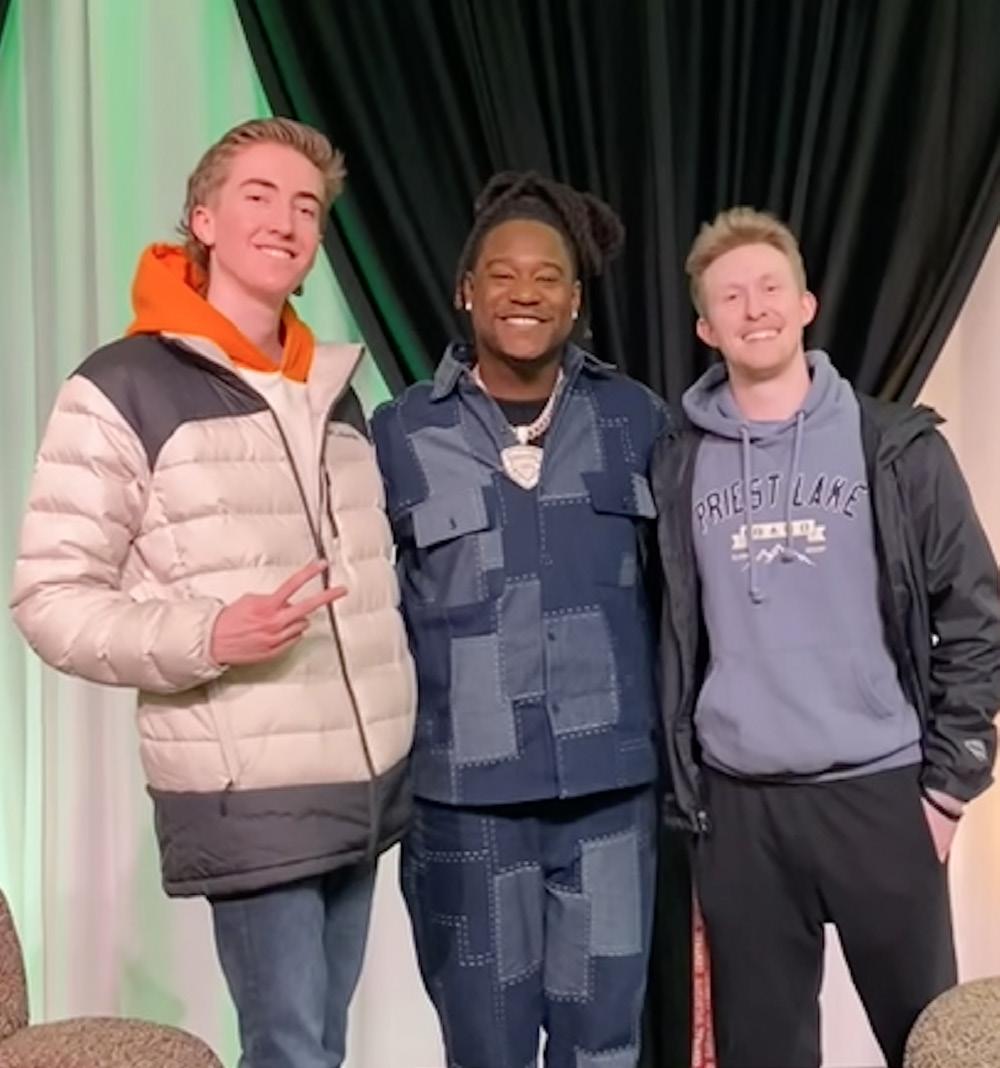

CONTINUED FROM FRONT PAGE
Their collective voices represent the leadership of our employees and students that includes well over 100 people, and we needed to hear the voices of those individuals on an important question about budgets. To create a culture of collaboration and inclusion, this is similar to the process we took for other major university initiatives related to campus safety, the strategic plan, and our marketing and branding efforts, among others.
Q: The email discusses a $15 million dollar deficit caused primarily by lower enrollment and state-funded wage increases. While the outlook of the message is positive, was there anything discussed at the meeting that you can share regarding how the university is handling staffing reductions moving forward?
A: Question three effectively answers this, ‘can we continue down the same path or should we shift to an alternative path?’ The president made it clear that he understands the challenges that have been created with the path we have been going down—of reducing our employee base. Folks are working harder, doing more, and we haven’t been able to replace individuals who leave at a fast enough pace because of the budget deficit. There is a morale issue that we must address collectively—the administration and our shared governance leadership groups. The point of the meeting was for the administration to hear from the leadership of our employees and students about how things are going if we wanted to continue down the path we have gone down, or if we wanted and needed to pivot. There was a consensus in the room to pivot.
Q: The second goal of the meeting posed the question “Can we continue down this same path if we receive insufficient funding for wage increases and if the governor’s budget — which includes a 3% reduction — prevails?” Was the meeting able to find an answer to this question?
A: There was consensus in the room that we must pivot to an alternative path. The critical component to this decision—and why it was important for the voice of the leadership of our shared governance groups who work directly with well over 100 leaders in their areas—is that it will take all of us working together to make this pivot. We will need to rethink everything—all of our structures and systems, all of the ways we do things. Which makes this an adaptive challenge – one where our previous ways of thinking, our perceptions, our habits are no longer valid and must be
Tanner Volk at his last game as a Wildcat. (Photo courtesy of Andy Guerrero)
We will need to rethink everything— all of our structures and systems, all of the ways we do things.
questioned and rethought. We need to think about both short and long-term opportunities. We must do this work through our vision, mission, values and strategic plan. And we must continue to elevate shared governance in the process. What we did in the Feb. 5 meeting was a bit new for our campus, only having done it one time before—so we are using muscles that we haven’t used as a university community. When we use new muscles, it sometimes feels uncomfortable and we aren’t really sure what to think about how it feels. But it is essential to do this work in this way and to confer with the leadership of these groups because this will also be hard and complex work— and it will take all of us working together towards a common goal. This is why the meeting was called – to bring in the shared governance leaders who represent leadership groups that they work with to hear their thoughts. The administration didn’t want to make this decision without their input.
Q: The email uses phrases like “alternative path” throughout. The prevailing idea being that if state funding is to be cut then CWU would have to rethink almost everything institutionally. At the meeting were these potential changes discussed, an if so what were some of the options that were determined?
A: At this point there are only
examples of concepts to get people to start thinking about changes. Now that we have come together as a community through this shared governance process to decide to go down this path, we will be creating opportunities for more concrete ideas to come forward from the university community. We now need to hear feedback from the university community on how we currently spend our funds and how we might spend our funds differently so that we can slow the attrition of employees.
Q: Before plans are finalized, will there be a space for staff and students to directly voice their opinions on the change? To what level will the campus community be involved in this process?
A: As with our other universitywide initiatives related to campus safety, strategic planning and marketing and branding, there will be opportunities for campus community involvement. For example, on Tuesday, President Wohlpart shared the same presentation with the President’s Budget Advisory Committee, which has representation from staff, faculty and ASCWU. This group should report back to their constituencies, and we will reconvene on April 22nd to hear thoughts. We are in the process now of thinking through the best way to get the feedback, input and involvement of the university community. That will likely
happen in March and early April.
Q: Is there anything budgetwise you would like to share that has developed since our last conversation, or anything you feel would be pertinent to share with the campus community?
A: Every public 4-year university in Washington is facing some type of budget issue, even those that have not had enrollment declines. Central has been working at this methodically for a few years and has made tremendous progress, and as a result, we can navigate the issues stemming from state and federal funding changes. This effort to take a different path should lead to positive changes that increase our flexibility in the future and allow us to continue to invest in student success. The most important idea behind this conversation is that we are weathering a challenging time, but we have been doing so in a manageable way. But we cannot continue down this path and need to take a different path in order to provide the support for our faculty and staff that they deserve.


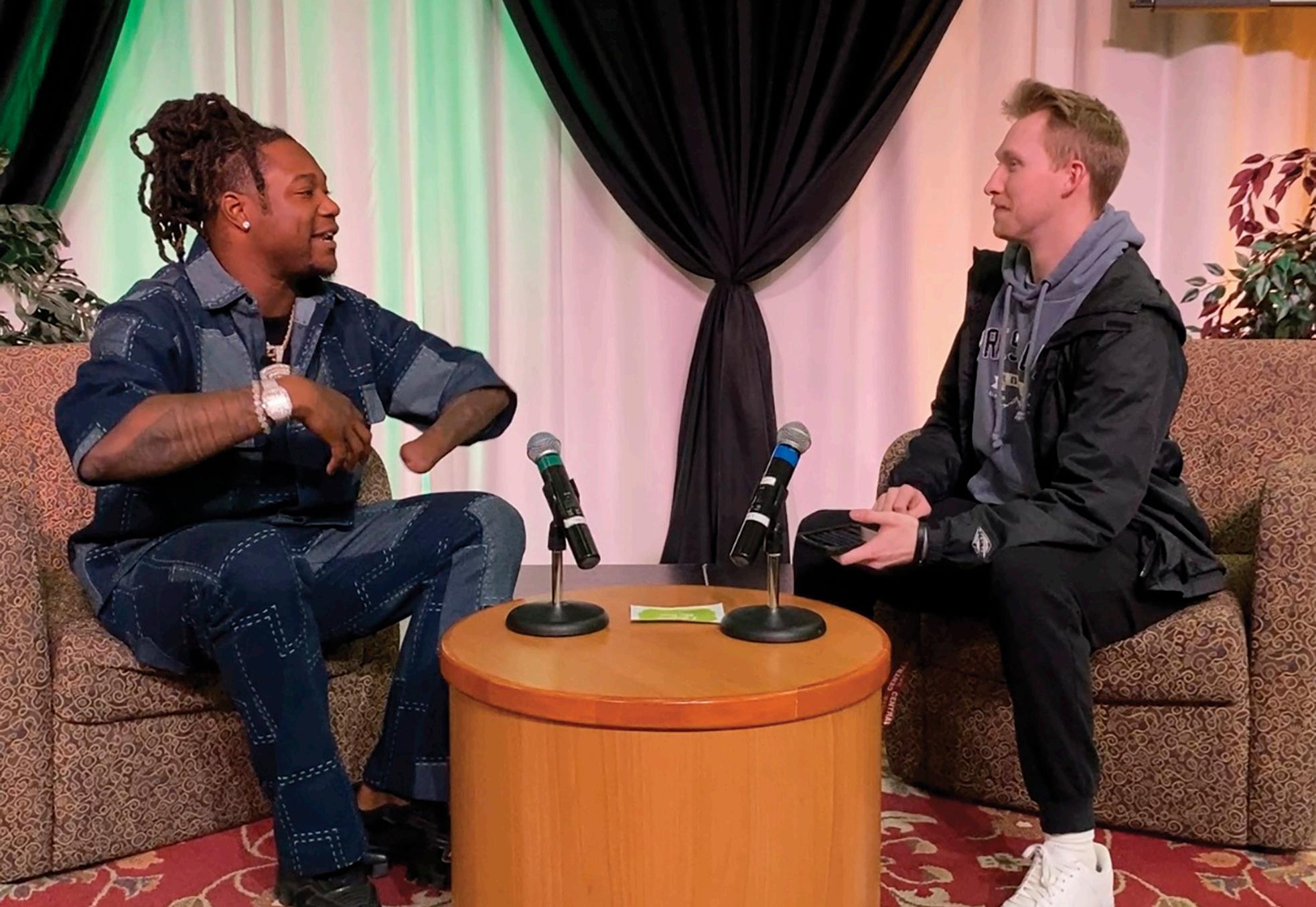
CONTINUED FROM FRONT PAGE
The brothers always stuck together, pushing each other to be better players, people and leaders.
He eventually found himself back on scholarship to play for the UCF Knights once again where he made the most of his next opportunity. In 2016 he was awarded American Athletic Conference (ACC) Defensive Player of the Year.
The following season he was once again the defensive catalyst of the team and was a key player in UCF’s undefeated regular season play which earned them the AAC championship. That season also saw Griffin and the Knights advance to the College Football National Championship where their storybook season came to an end.
The support system that you surround yourself with is one of the keys to overcoming adversity according to Griffin. “What stood out is my brother believed in me so much, and even though I lacked it, I was able to hold onto his belief he had in me,” Griffin said. “He wasn’t going to allow me to lose faith. So you know what? I’m going to hold onto what you have, then I was able to see it for myself. I’d be doing a disservice if I didn’t believe it.”
With his talent on full display at UCF he eventually caught the attention of NFL scouts and after a long time waiting, he was invited to the NFL combine. The combine
is an event where NFL draftees go and show off their athletic abilities with events such as the 40-yard dash, bench press, high jump, long jump and other trials to push the athletes.
Lots of eyes were on Griffin as he put on a show when he broke the record for the fastest 40-yard dash by a linebacker with a time of 4.38 seconds. It didn’t stop there as he impressed scouts with his strength as well, using a prosthetic hand to help him bench press 225 pounds for 20 reps. All his hard work brought him to Seattle with pick 141 in the draft to reunite him with his brother making them the first set of twins in the NFL to play on the same team.
“During the draft it was a lot of emotions because I was projected to go high in the draft … It was supposed to happen how it did because I wouldn’t have ended up in Seattle if I went higher,” Griffin said. “I did everything I was supposed to do. I’m the highest rank this and that. Why haven’t I got a shot? Just to find out I ended up falling enough in the draft to be selected by the Seattle Seahawks and play alongside my brother. So it’s like people ask ‘would you change it?’ No, not now. I would never change it because I wouldn’t have received the opportunity. What’s the odds to become the first twins ever drafted to the same team? … I wouldn’t want that change, I don’t want that change for nothing in the world.”
During the 2020 divisional round of the NFL playoffs, the Seahawks were facing the Green Bay Packers and the Most Valuable Player (MVP) award winner Aaron Rodgers. Griffin got to the MVP quarterback and took him down for a sack but not without the help of a teammate. When he looked up, he saw none other than his brother Shaquille as they both took down a future Hall of Fame player together. Griffin stated it was such a big moment for him and his brother that he will one day have a mural of that moment in his home.
Adversity was not only faced by Griffin in his football career. While speaking to CWU staff, students and faculty he mentioned circumstances of prejudice he has faced referencing a time when he was pulled over by an officer who was overly aggressive and ready to detain him until the other cop came over and recognized who they had pulled over. Griffin’s message for anyone who finds themselves in a moment like this is the same message his father always told him, “Just get home”. Growing up as a kid who was missing a hand and was black, he experienced plenty of prejudice and stated that he thought it was normal.
Griffin retired early from the NFL to help others and that is exactly what he has done since. Apart from being a motivational speaker detail-
ing the hurdles of his journey, he has also written two books and mentioned in the SURC ballroom that he is working with a company to make prosthetics that are a third of the price of the ones on the market now.
“The takeaway from my story is it’s something transparent that all of us went through something before to be where we are at now. I’m just a reminder,” Griffin said. “That’s the thing about support systems and stuff around you, sometimes you need those reminders. You get used to overcoming and overcoming and overcoming and stuff like that, and sometimes you forget where you came from. That’s where you need people like myself to be able to remind you to overcome, don’t get complacent, don’t get tired because your next adversity may be the hardest one. But it doesn’t mean you can’t overcome it, it’s only going to prepare you and set you up for the blessings that you will receive after you overcome it.”


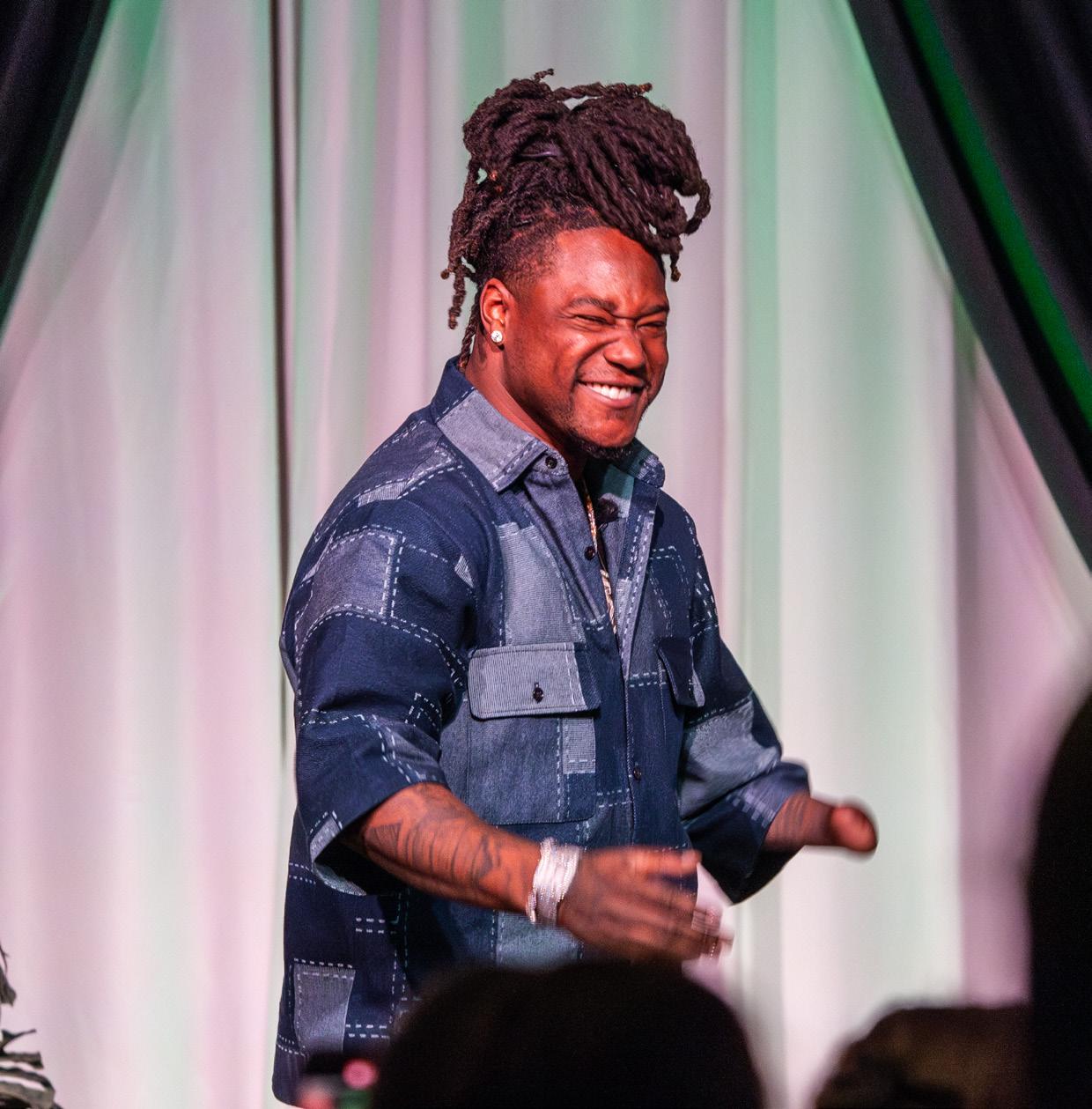
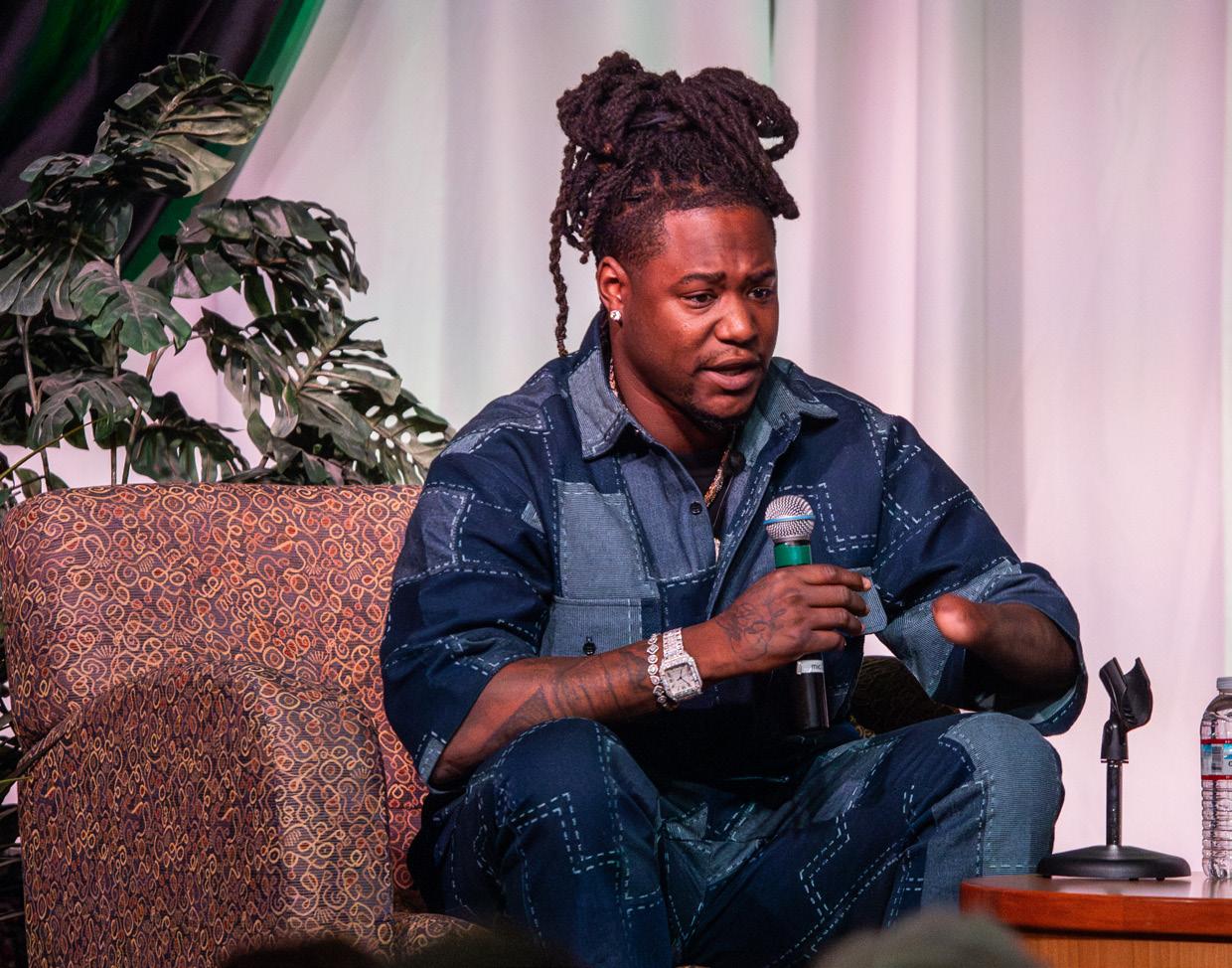


Rodrigo Rentería-Valencia becomes CWU’s dean for graduate studies and research
plus an update on cwu’s hooding ceremony
Kyley Glenn Staff Reporter
From assistant professor to dean, Rodrigo Rentería-Valencia’s professional career has taken on many roles during his time at CWU. In January of 2025, Rentería-Valencia was promoted to the full-time dean for Graduate Studies and Research.
“I have made Central my home, my place of personal and professional growth,” Rentería-Valencia said.
Rentería-Valencia’s academic journey started in his hometown, Mexico City. He attended the National School of Anthropology and History to receive his bachelor’s degree, “I became enamored with anthropology as a way to approach life, and so I started to study anthropology. I finished my Bachelor studies there,” Rentería-Valencia said.
During this time, Rentería-Valencia moved to Northern Mexico to research Indigenous communities in the area. The five-week trip turned into five years, and a new door to higher education was opened up for him due to the project.
“My idea of education stopped at the bachelor level,” Rentería-Valencia said. “And then working in the Borderlands, a professor from the University of Arizona came and saw what I was doing there and said, ‘Hey, you should apply to the University of Arizona,’ and for me, that was a question that I never expected. I never considered myself a PhD candidate or PhD material. I never considered myself as a doctor, much less as a dean … This professor, Marcela Vasquez, who is still at the University of Arizona, opened the world for me.”
Furthering his career academically, Rentería-Valencia attended the University of Arizona to receive his master’s and doctoral degrees in ecological and environmental anthropology. He did not attend his own hooding ceremony since his parents were not able to be there. He said, “From my perspective, it was more a celebration to showcase to them the collective achievement.”
According to the newly appointed dean, he takes the aspect of passing on the gift of education that a professor was able to give him many years ago very personally. He wants to give people the ability to consider grad education as a possibility.
He shared that part of his mission is helping first-generation students, something he said CWU values very highly. “I know for a fact that a lot of the emphasis of Central’s mis-
sion and vision and strategic plan is to support first-generation students, because that’s part of the identity of Central, to support their journeys and the journeys of their families in understanding higher education and the value of higher education and creating a new future for everyone. So in that sense, this institution is very sensitive to the challenges and opportunities of first-generation students,” Rentería-Valencia said.
One of the responsibilities his new role comes with is taking on CWU’s hooding ceremony and any decisions on how it will occur for those graduating this spring. The previous decision to have students walk the stage already hooded was pushed by ASCWU. Now, the ceremony will take place with Dean Rodrigo Rentería-Valencia being the one to hood the graduates on stage.
Rentería-Valencia shared how he feels being able to host this year’s ceremony. “I always appreciate it because these ceremonies really matter … I am always, full disclosure, crying in these commitment ceremonies, because I see my students and nothing gives me more pride,” Rentería-Valencia said. “So it’s something that I look forward to every year and that I hope everyone at Central gets to experience at least once.”
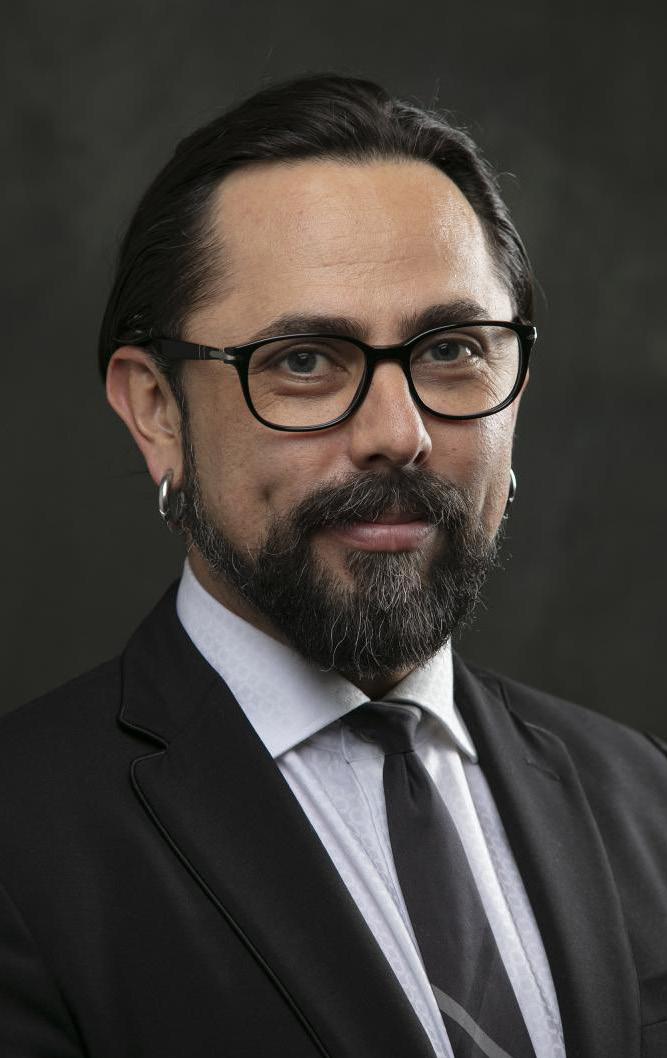
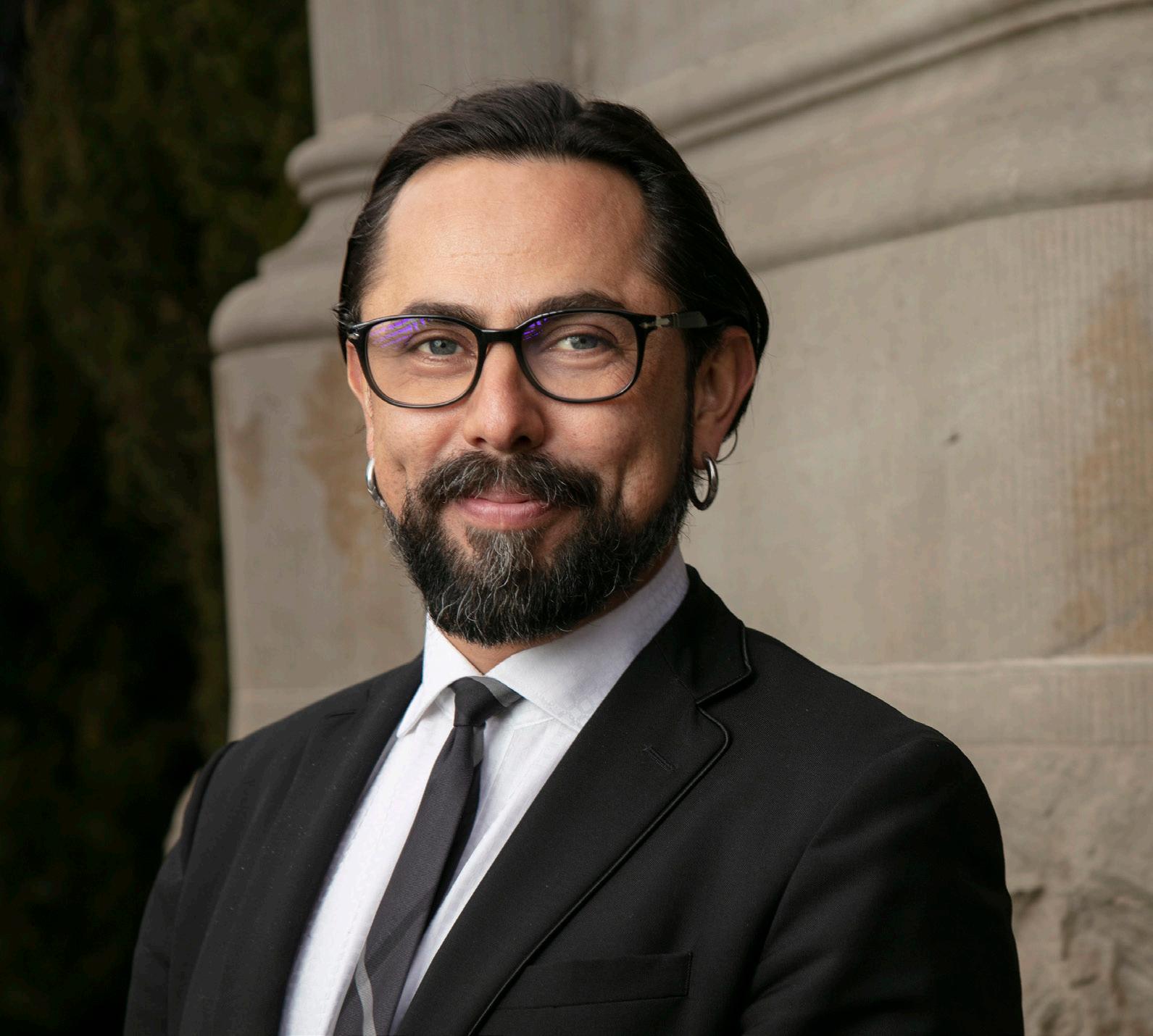

DIVERSITY THE PAGE
Sharing perspectives

Supporting awareness
coming to america
Astor Powell-Pedersen Copy Desk Editor
IDr. Claudia Mendez Wright tells her story
n the fourth volume of a running series, Dr. Claudia Mendez Wright discusses her experience growing up in Colombia, her journey in coming to live in the US and her connection with her home country.
Claudia Mendez Wright
Dr. Claudia Mendez Wright is a professor of sociology who’s been working at CWU for about a year and a half. Wright attended Universidad de los Andes (University of the Andes), the University of Louisiana and Utah State. Wright grew up in Bogotá, the capital and largest city of Colombia.
“I grew up in the 80s, and Colombia in the 80s was really dangerous,” Wright said, “[There were] two big drug cartels and armed militias that targeted the civilian population. Ultimately the ones who pay are the most marginalized populations in our country. That was the environment I grew up in.”
Despite the privilege that Wright feels she grew up with, her family was still affected by the state of the country. “I was able to go to school, I was able to get an education and my parents had decent jobs. However, the economy still wasn’t great, so my parents struggled. When they got divorced my dad decided he couldn’t afford the education he wanted to give us, so he migrated to the US,” Wright said. “At that time, the immigration laws weren’t as they are today, so he was able to work with a permit.”
One thing that is very important for Wright is the way her background shaped her to view the world around her. “I thank my country for giving me vision. I think that is something that is being lost. Maybe it’s the Culture Industry that Theodore Adorno talks about—it keeps us so entertained that we’re not able to have a vision for what’s happening,” Wright said. “I think growing up in Colombia makes you really aware of the importance of education and how to use privilege to improve yourself obviously, but also to improve your family and to give back. ”
While attending Universidad de los Andes (University of the Andes) in Colombia, Wright went on to work in marketing, “I loved it, but there was always something missing. I wanted to own the research I was doing. In the private industry, it’s not really yours, ” Wright said. “So I decided to migrate to the States and get a PhD to become a university professor.”
“I applied to some Master’s programs in the States … I did get in, but they wouldn’t give me funding. As a Colombian paying for education here is impossible,” Wright said. Despite the previous disappointment, Wright reached out to the Director of Graduate Studies at the University of Louisiana. Within the day, he got back to her saying that while the deadline to apply had al-
ready passed, he would look into finding funding for her. “In like two days he calls me to tell me he has funding for me.”
He said that he wanted Wright to be there and helped her find a job doing marketing at the Art Museum. Two months later after all of her paperwork had been processed, Wright was on her way to Louisiana. “I showed up with two bags in the airport. The Director of Graduate Studies picked me up and put me in a dorm. I slept that night without covers or anything because I didn’t own anything, and that’s how my life started here.”
The years Wright spent at the University of Louisiana were amazing. “I had a blast. It was, I think, two of the happiest years of my life,” Wright said. At the university, she met a com munity of people, mostly international students from all over the world who became her friends, “We partied a lot!”
After her master’s, she moved to another state to pursue a PhD program but describes her ex perience at the university, which she has chosen not to identify, as extremely toxic. “I stayed there for a year and it was a disaster,” Wright said. “I was the only international student. It was an ex tremely toxic program where some professors and students would roll their eyes whenever I would bring up my experiences from Colombia. It was just a toxic, horrible, disgusting environ ment. You just don’t learn in an environment where you feel othered and racialized. And they made it really evident. ”
Wright felt miserable there, but in the middle of all these challenges, she met the man who is now her husband of 15 years. She got married and decided to leave the program. “I had it re ally hard for a while, as I felt that I had lost my North,” Wright said.
Wright continued working in the marketing field in Colombia while still living in the US for a while. She said that as an immigrant, even being privileged in having an education, finding work in the US was difficult without the connections that come from “living in the country that you are born in I was sometimes reduced to the fact that I spoke Spanish instead of my skills as a professional.”
Read the rest of her story online:
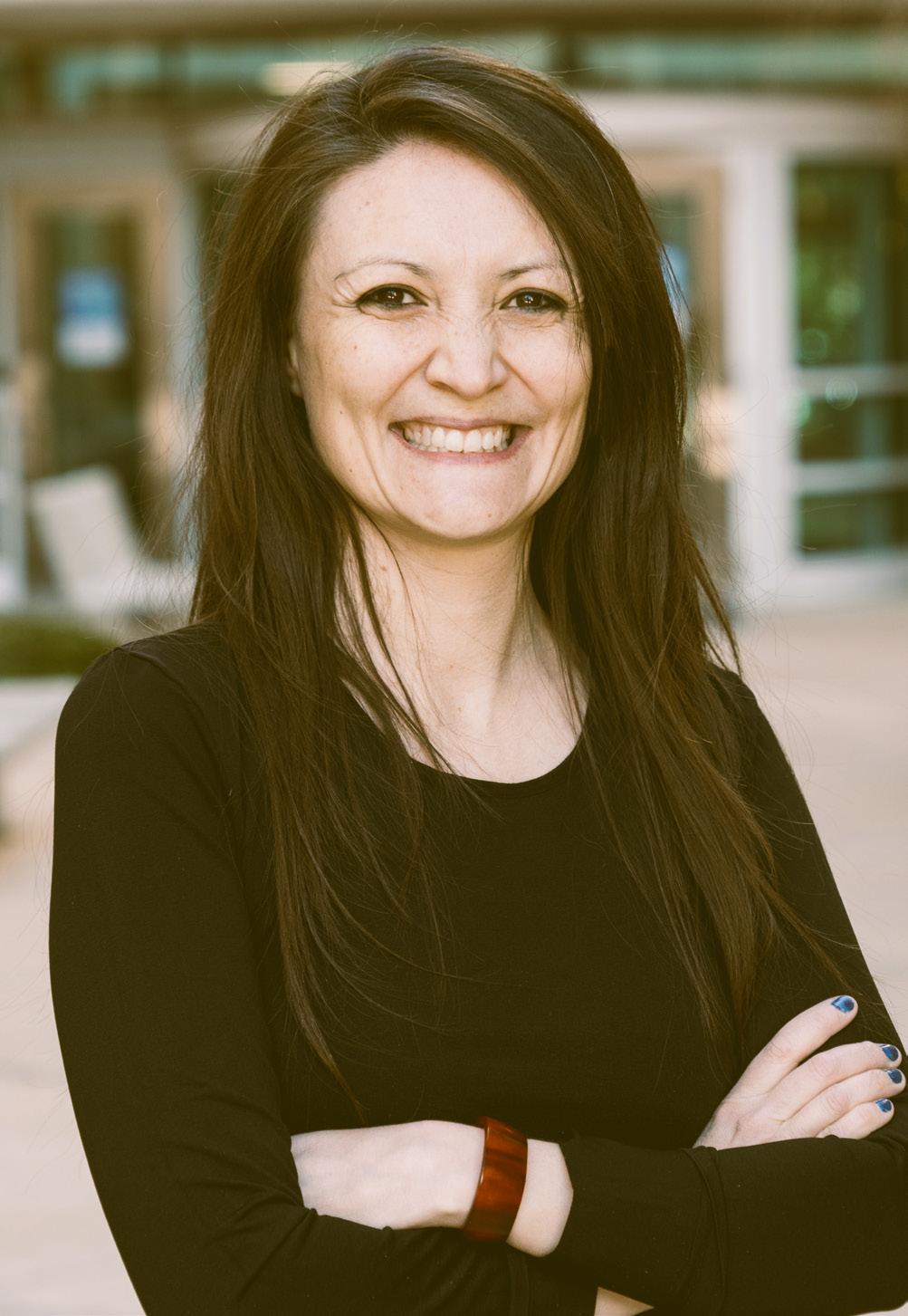

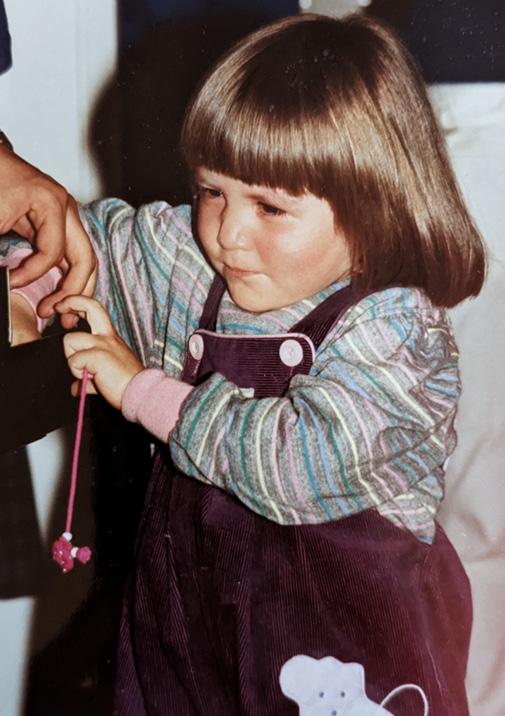
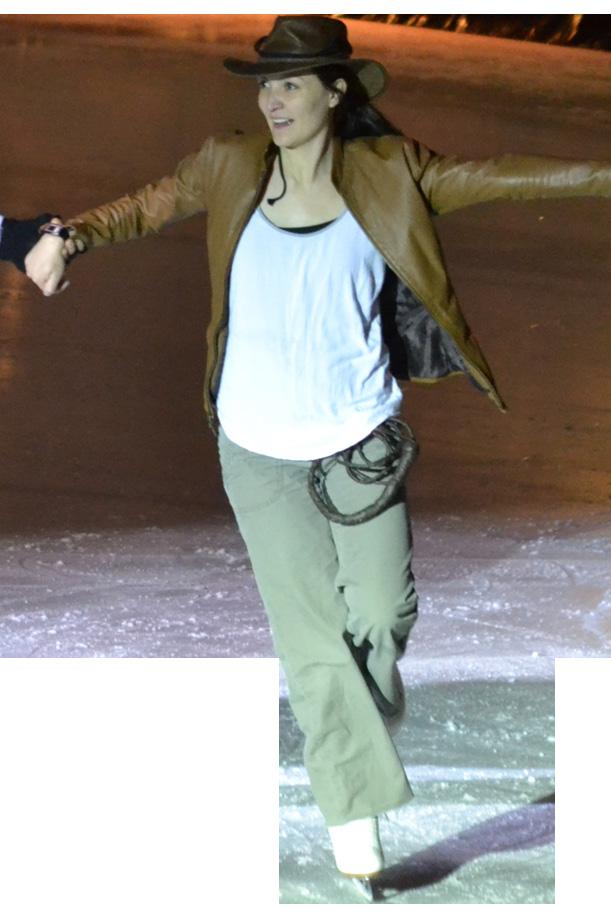

The SURC Pit Takeover
A Conversation about Black History, Music and Education
Brandon Mattesich Co-Editor-In-Chief
Recently the Diversity and Equity Center hosted a “SURC Pit Takeover” in which they showcased a plethora of musicians throughout history, all of whom have made big impacts on black history and music.
“The idea came from a meeting that we had with our director at the DEC. We were talking about different ways we can show appreciation for different aspects of our culture,” Shadae Ingram, a senior exercise science major and member of the CWU Black Student Union (BSU), said. “A lot of the time, other people can grapple on to music, what they’re saying, what the vibe of the song is. So we decided to take over this very public space and fill it with black creativity, black art a black sound.”
Music being used as a tool to educate is not a new idea, and Ingram shared why they believe this concept is so important, and why black creators have to fight so much harder to succeed. “All music has a story, it has a history, and ours is just one that we’re trying to put in the spotlight. All music should matter to the general population, but most of the time if it’s a black creator, if it’s a black creative saying that happened to them, it will never be mainstream until it blows up on TikTok or something, and it gets the rest of America’s white gaze. That’s the difference,” Ingram said.
Lashaya Doty, a junior social services major and member of the CWU BSU, also spoke on the importance of listening to music for education. “When it comes to black culture I feel like we see it always for entertainment, but
no one actually wants to sit down and actually listen to what’s being said,” Doty said. “For example with Kendrick’s [Super Bowl] performance. He had a message, and people completely said, ‘Where is it at? I don’t see it.’ When it comes to not just hip hop, but black music, it’s so important for us to be listening and not just dancing along. Because, of course, we can dance to it, but if we’re not listening to what words are being said, or the history that’s being represented in this music, what are we really listening to?”
Ingram spoke further on the importance of hip-hop as a genre. “People really forget that this genre definitely existed before this time. Hip-hop is a really pivotal part of black culture, and if you’ve been listening to hip-hop and you’re in the culture, you know that it didn’t start with Kendrick Lamar,” Ingram said. “It started years ago, in the 90s, people rapping about freedom, people rapping about how problems were brought into our neighborhoods, and how we’re still going through it. We’re still dealing with the repercussions of chemical warfare in our neighborhoods, bombs are being dropped in our neighborhoods. If you like hip-hop, you listen to ‘Fight The Power,’ listen to ‘The Public Enemy.’ You listen to people that have a message that is freedom.”
Doty talked about how important artists like Megan Thee Stallion are to musical culture, and how often they are discredited. “She’s [Megan Thee Stallion] definitely a woman empowerment girl, she doesn’t just shake her ass. Her music builds confidence in black
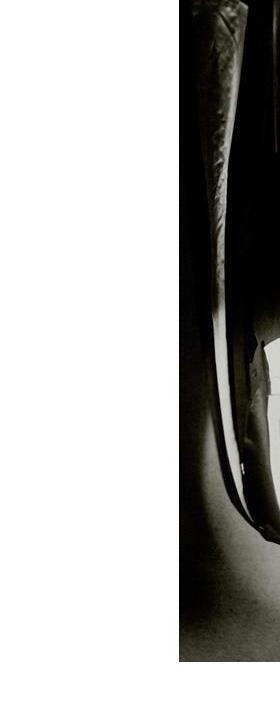
women, because she has struggled, and she showed that in her music … We all know her but we need to really listen to her story. She’s really talking to young black girls and saying, ‘You are powerful, you are confident, you are amazing, you are beautiful.’”
Music often has a strong cultural background, and, according to Ingram, one goal of this event was to educate students on the history of a lot of this music which is so deeply tied to black culture and black history. “Music is so import ant in education and in history, people can learn from the feeling that’s invoked from the song, and that is a lifetime of learning.”
“When colonization was hap pening, one of the ways that they would subject a person to self-ha tred is by what they were saying to them. They were controlling the psyche. We were not allowed to speak, we weren’t allowed to sing. If you did, you were beaten. So when we sing it’s so much more than just a song. pain, a lifetime of fighting and re silience that is heard over an 808, a trap beat,” Ingram said. “The different creations of sounds all mean something, and they all are telling a story … There’s nothing that could replace the amount of l earning and the amount of generational information and trauma and wealth that is passed down through the courses of these songs.”
This event was the first of a series of takeovers, which will be happening every Wednesday from 11 a.m. to noon in the SURC Pit.

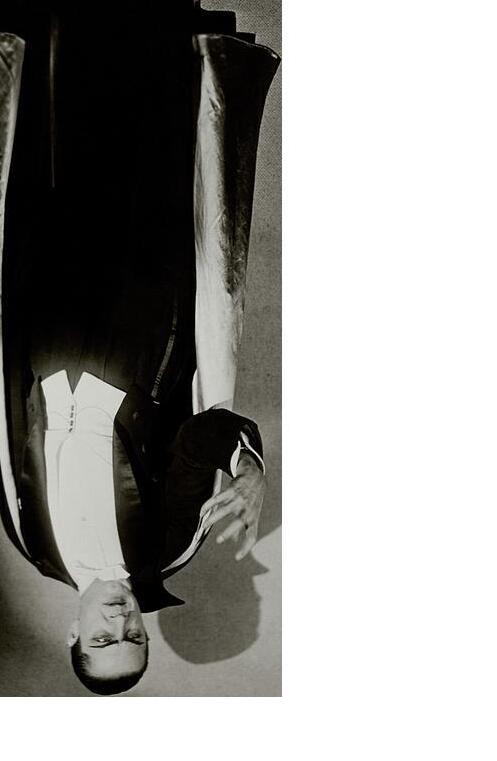
Dracula
A Feminist Revenge Fantasy shines a new light on a classic tale
WU Theatre’s latest production, “Dracula: A Feminist Revenge Fantasy, Really”, is a complete retelling of the classic Dracula story, serving as a feminist revision of the piece. The production, which will have its first showing this coming Saturday, provided opportunities for students on both cast and crew to explore new roles and address social commentary in a way they hav-

Neo Klosterman, who plays the titular vampire, shared what they find important about this retelling. “I think what makes this version different is the fact that the monsters look just like us,” Klosterman said. “Vampirism has always been a metaphor for some social taboo or commentary. Over the years it has been used to discuss sexuality, sexual expression, racism, anti-semitism, among other things. Kate Hamill’s version takes the opportunity to discuss toxic masculinity and misogyny, which is, unfortunately, something we are currently seeing on the rise again. This story is about empowerment and asking us to challenge the structures that we are born into.”
Ryan Afuma, who is both ensemble and the Dr. Seward understudy, shared
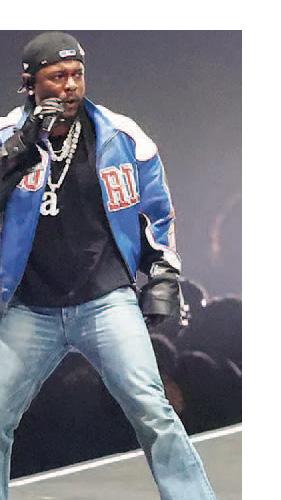
a similar sentiment about the importance of the piece. “I think one of the most significant parts of this story is the emphasis on how the vampires blend in and coexist with humans. In Kate Hamill’s world, the vampires do not have fangs, they can walk in broad daylight, and they look exactly like us,” Afuma said. “Dracula is really connected to this idea of toxic masculinity and control. When you consider that the only thing separating him from the humans in this story is his own monstrous nature, you start to see the message of how monsters can exist in our world too; Fangless, normal, even charming good men.”
Preparing for a play like this doesn’t just require a good script, it also requires a large team of people all working to make the production run smoothly. One member of this team, Alana Fitzgerald, shared their experience working as the production’s sound designer. “Preparing for the role of the Sound Designer for ‘Dracula a Feminist Revenge Fantasy, Really’ has been a thrill. Leaning into the world of vampires and the sound design motifs that have been in our media since the original film Dracula, 1931, has been nothing short of a privilege. This show is massive and requires endless work from myself and the
rest of the sound team but it’s all worth it when you feel that thunder shudder your bones,” Fitzgerald said. Fitzgerald also talked about what putting together this production meant to them, having grown up with vampires as a pivotal part of pop culture. “I was raised on ‘Buffy the Vampire Slayer’ and seeing a modern script address the same complex societal issue of power we’ve always seen in our vampires brings me immense pride,” Fitzgerald said. “This play is a story that takes the cultural significance of the original Bram Stoker Dracula and its, at the time progressive, portrayal of women’s dreams, shame, and fears into our modern cultural context to highlight the silences that still live in our society. Watching our actors and crew fall deeper in love with the vampire as I had as a child brings endless warmth to my heart.”
Tickets are available online, and more information about when and where to watch the play can be found on CWU Theatre website.
Karaoke Unplugged What Happens Behind The Mic
araoke Night was hosted at the Village Grill on Feb. 12th. The event was filled with chatter and singing, brave students taking the mic and singing their hearts out to their favorite songs with the crowd singing along. One performer decided to do a rendition of “Part Of Your World” from “The Little Mermaid”. As they took to the stage their friends cheered and screamed with support, clapping loudly once the performance
Kendal Murphy, a sophomore majoring in sociology, gave their opinion on the event. “It’s pretty cool. Honestly, I like how social it is, and it’s just really relaxing,”
While some people sang, others took the opportunity to chat amongst the crowd. People walked around and engaged in person -
al conversation as the performances went on. Once the performers wrapped up, people clapped loudly, then resumed their conversations.
Sam Hartley, a sophomore history major, chimed in with their opinion as well. “It’s fun, I wasn’t expecting it. I prefer to eat in quiet environments. So this is kind of just the opposite of what I normally prefer to spend my time in, but it’s fun,” Hartley said.
Avery Hilt, the ordering manager for dining services, gave their stance on the event. “In times like these, and just the state of the world, it all seems so stressful and you really want to have that community,” Hilt said. “Be ing a student is so hard sometimes, you have classes and work and some times you want to hide in your lit tle hole in your dorm … having that community, not saying we don’t have that already, but making more events and also just having that vibe.”
Hilt also shined some light on what
they thought the purpose of Karaoke is. “For a lot of people, even if it’s not their main profession or what they want to do, it’s still a creative outlet. You may not be good at drawing or you may not be good at singing, but you don’t need to be good at those things to still be creative,” Hilt said. “It makes so much sense especially, again, in times like these. Creativity is so important, art is so important.”

TRIUMPHS
OVER CAL POLY IN SNOWY BATTLE
Kailee Heath Staff Reporter
The Central Washington University (CWU) men’s rugby team braved the elements and a determined California Polytechnic State University (Cal Poly) squad to secure a 20-12 victory in a snow-covered match on Saturday. The Wildcats demonstrated grit, adaptability and strong teamwork to come out on top in difficult conditions.
The game started with CWU applying early pressure, and it was Jac Tregoning who put the Wildcats on the scoreboard first. Tregoning successfully converted a penalty kick, giving CWU an early 3-0 lead. With visibility and footing compromised by the snow, both teams had to adjust their strategies, focusing on controlled ball movement and tactical kicking.
CWU continued to build on its lead as Campbell Robb made a significant impact with two tries. His first came after a wellworked phase of play, where the Wildcats capitalized on quick ball movement to break through Cal Poly’s defensive line. Robb’s second try further extended CWU’s advantage, as he powered past multiple defenders to cross the try line.
Adding to CWU’s scoring effort, Tiai Vavao contributed a try of his own, further securing the Wildcats’ lead. Despite the challenging conditions, CWU remained disciplined, executing their game plan effectively. The team’s defensive structure was also a key factor in their success, as they managed to contain Cal Poly’s attacking threats.
OPINION:
Hunter Rhea Columnist
The San Francisco 49ers have caused me heartache, heartbreak and moral defeat this past season. But I have a strategy that will help the Niners take over the National Football Conference (NFC) and take the trip to the Super Bowl. First off, I’ve got some advice for the team. Deebo Samuel Sr. is deadweight and doesn’t play like he has a family to feed, trade him. Make sure Trent Williams is healthy because they run all of their run plays through the left side. Keep George Kittle running slant routes in the middle due to his success rates on third down. And keep Christian McCaffrey healthy for red zone situations.
Cal Poly, however, was not without its moments of strong play.
The visiting team responded with two tries of their own, attempting to mount a come back in the second half. But CWU’s defense held firm, preventing any late-game heroics from their opponents. The snowy conditions made ball handling difficult for both teams, but CWU’s ability to control possession and capitalize on scoring opportunities proved to be the difference in the match.
The victory adds another strong perfor mance to CWU’s season as they continue their push for success. CWU’s Head Coach and players praised the team’s ability to adapt to the harsh weather and maintain focus throughout the match. With this win, the Wildcats gain momentum heading into their next set of challenges.
CWU will now turn its attention to pre paring for upcoming matchups, particularly with their next matchup against third ranked Saint Mary’s College, where they will look to build on their success and refine their perfor mance. The Wildcats’ resilience and ability to execute in difficult conditions highlight their potential for the rest of the season.
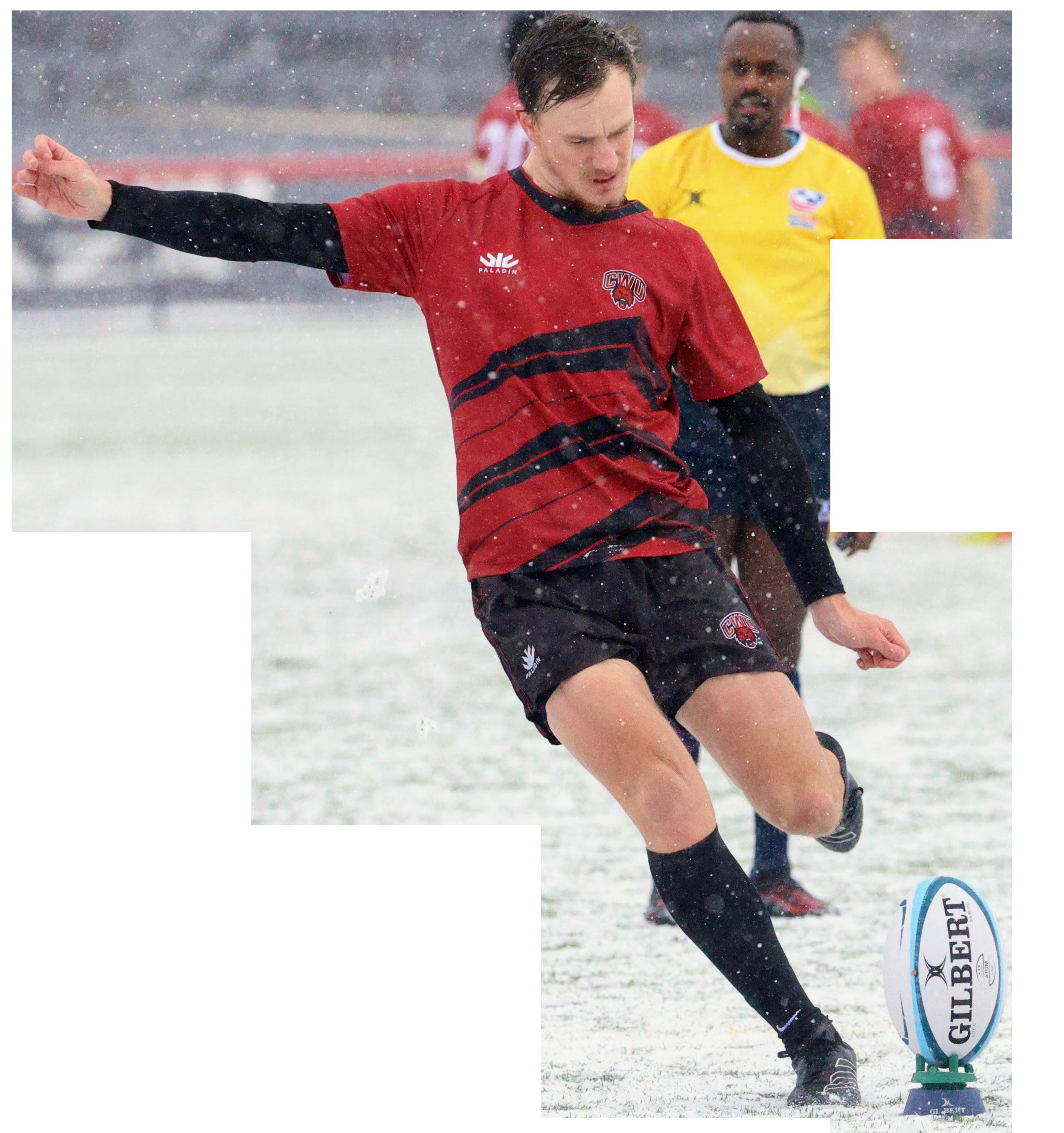
THE 49ERS WILL WIN THE SUPER BOWL IN THE NEXT TWO YEARS
Our defense and special teams are under construction. Returning coaches and the hiring process during the off-season have me looking up for our preseason and postseason, knowing that we will have an actual postseason.
We will see what the National Football League draft brings the Niners, my main concern is the offensive line. Drafting more big men to protect Quarterback Brock Purdy will be crucial for him to do his job as the playmaker Purdy is.
Knowing the Super Bowl slump is over and the NFC as of now is a slugfest, the Niners are going to build a contending and consistent team that meets the demands of the NFC West conference.

My prediction during the season against American Football Conference teams includes them beating the Baltimore Ravens, Kansas City Chiefs or Buffalo Bills whichever one comes their way. My belief is that our defense is getting better this year and the Chief dynasty is being dismantled. I want to think we can beat every team by 15. The 49ers will dominate the NFC West and be at least second in the whole conference. I only say that because the only team I respect is the Detroit Lions.
Concluding my final thoughts, the 49ers will make the NFC Championship at the bare minimum. Plus, they will win the Super Bowl within the next two years.
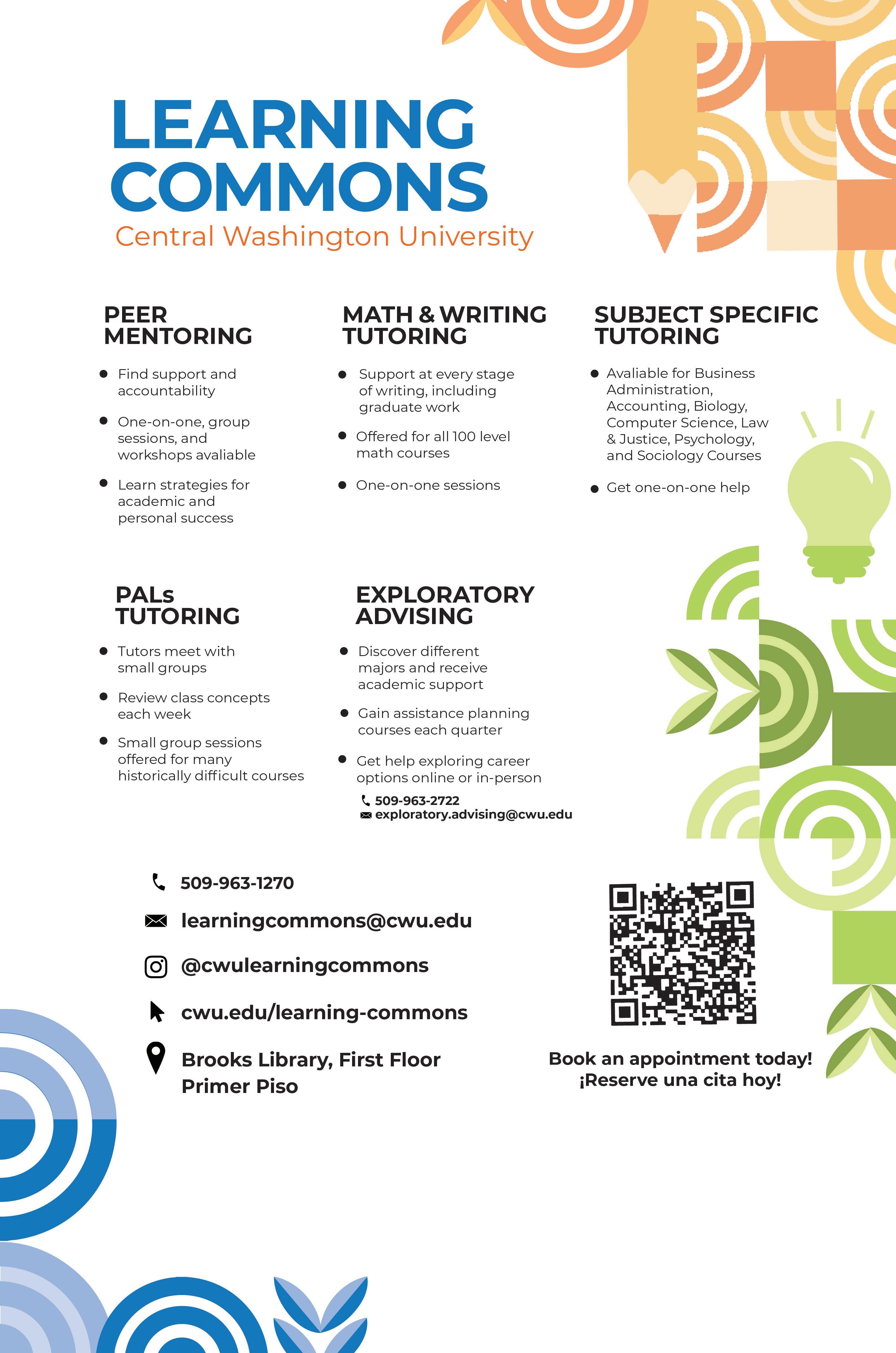
If you didn’t understand the second Death Note opening, you didn’t understand the show
Kam Schindewolf-Broyles Columnist
“
Death Note” is my favorite show of all time and has been since I first watched it when I was 11 years old, so for 12 years I’ve been a fan of this show. To the point where I currently have 3 “Death Note” tattoos (one of which I got the day of writing this), I’ve met the English dub voice actors and I’ve dropped hundreds of dollars to be able to cosplay the characters. These characters drew me in and the story is so interesting that I couldn’t help but be captivated by it.
The original opening song of the show also drew me in, being such a good song that has such interesting visuals. But what about the second opening?
The second opening of “Death Note” is first seen in episode 20 of the show, when Light and L establish a mole within the Yotsuba group. The group contained member Higuchi who had temporarily taken ownership of the Death Note while Light had lost his memories.
I remember when I saw the second opening I was shocked as it was so different from the original one, but I still liked it, because I just thought it was a cool opening. As I grew up I started to understand the meaning and reasoning behind the harsh change of the opening, but I also started to learn that people didn’t like or understand it.
The first opening was slower, it showed visuals that describe the battle between L and Light as well as visuals that describe the events of the episodes that have the first opening. It showed Light’s more calculated movements, his thought-out plans on how he will get rid of criminals and become a god.
The second opening is fast, it’s aggressive and the visuals are more colorful and abstract looking. This opening depicts Light’s descent into madness. While his moves are still calculated, he’s clearly becoming anxious and paranoid. It may not make sense originally because the second opening starts when Light still hasn’t regained his memory of the Death Note or of being Kira, but when you really look into it, it starts to make more sense.
The second opening doesn’t start until episode 20, but Light doesn’t regain his memory until episode 24. So how could he be starting to go mad before even remembering his plans? As I stated previously, episode 20 is when they establish a mole in the Yotsuba group. Having someone on the inside gave them a great advantage in finding who Kira was (at the time).
At the time Light’s only interest was finding Kira, and he became as obsessed over it as L was. He was determined to catch and bring Higuchi to justice and would do anything to achieve this goal.
This is similar to how he acted after regaining his memory of being Kira. During the episodes with the first opening, he of course had the goal of becoming god and had his plans on how to do it. But he was smooth, calculated and calm.
After regaining his memory he went about being Kira as he did when he was trying to catch Higuchi. He became obsessive. His main focus no longer was getting rid of criminals with a plan to get rid of L as well, but now his focus was on getting rid of any organization that dared to stand in his way.
You can see it in the way he is often snapping at Misa, his unnerving smile when he got to speak on the phone to Mikami when meeting with Kiyomi, risking his sister’s life in order to get the Death Note back and even begging his father on his deathbed to write Mello’s name in the notebook before he passed, just to have one more enemy out of the way.
So simply put, if you didn’t understand or like the second opening, you didn’t understand the developments that Light went through. Yes, he was crazy at the beginning of the show as well. A high school student with a plan to become a god? Can’t get much crazier than that. But if you pay attention throughout the show, you really get to see how he truly snaps.
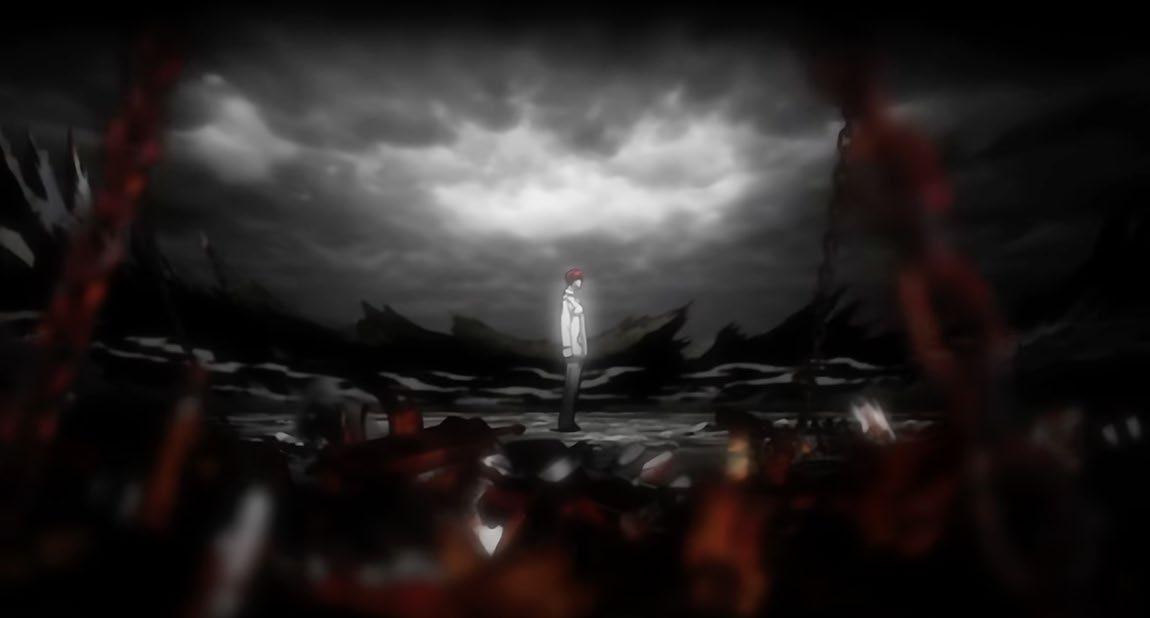

OPINION SECTION
SOUND BITE
COLUMN
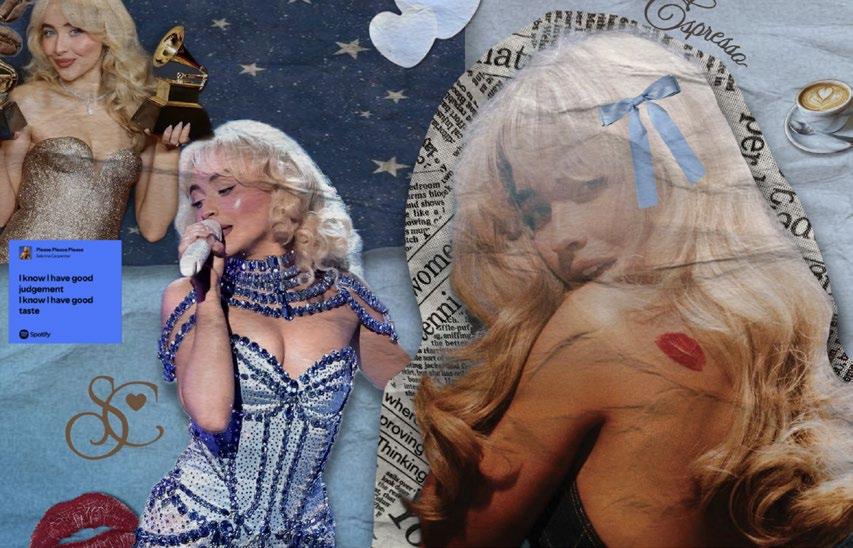
Sabrina Carpenter’s Short N’ Sweet Rise to Winning a Grammy and Releasing Her Deluxe Album
Kyley Glenn Columnist
Following the recent win of her first Grammy in her musical career in the category of “Best Pop Solo Performance” for the hit song “Espresso”, singer Sabrina Carpenter released a deluxe version of her sixth studio album, “Short N’ Sweet” last Friday. This extended version features five new songs. Those include 15 Minutes, “Please, Please, Please (featuring Dolly Parton)”, “Couldn’t Make It Any Harder”, “Busy Woman”, and “Bad Reviews”.
The deluxe album maintains the theme of the tracks previously released in the original “Short N’ Sweet” studio album. It contains a pop style with a sprinkle of country throughout the vocals and instruments. There are features of many risque lyrics that leave people either feeling good about the presence of a woman in the music industry who is able to express herself in the way men have for years or people thinking she’s too vulgar for an audience of younger people.
The first new song, “15 Minutes”, is a track with a retro upbeat sound as the introduction. Like many of her other songs, it is a beat that any girl could easily get up and jump around to in their room. Making you feel as though you are a teenage girl in a coming-ofage movie. The lyrics almost get lost in the beat due to the subliminal messages sprinkled within the title and catchy phrases. “I can do a lot with 15 minutes” is the overall message she left within the song.
A spin-off to the hit song in the summer of 2024, “Please, Please, Please”, Sabrina Carpenter changed the sound to be a bit more country and contain vocals from the iconic singer of the hit song from 1974 “Jolene”, Dolly Parton. Her high-toned, old-school, scratchy-sounding singing takes you back to hearing other performances she has done. Another change within the song is the lack of explicitness. Rather than the swearing that the original version contains, alternative words that would be in a radio, take the place of the lyrics. A music video had been created as well where the two artists created a sequel to the original video starring Sabrina Carpenter and Barry Keoghan. Following the accusations of him cheating on her, the video takes a twist from being a love story and becomes focused on getting revenge on the male lead for embarrassing her. This is contrary to her lyrics in the track where she says, “Please, Please, Please, Don’t Prove them right.”
“Couldn’t Make It Any Harder” is a song with a slower guitar entrance and vocal focus rather than instrumentally. Carpenter keeps her tone within a Soprano pitch with a sultry touch to it, adding a variety from
the danceable songs previously queued. The song can be interpreted in multiple ways but the one that is depicted through the lyrics is Carpenter’s inability to make it any harder to love her, hinting she’s a difficult person.
“Busy Woman” is a fast-paced song with a more retro sound within the backing vocals and sounds sprinkled throughout. The song describes Carpenter being too busy for a real relationship and wanting less due to her being busy.
“Bad Reviews” has a sound similar to “Slim Pickins” from Carpenter’s album “Short N Sweet” with a strong country guitar sound and a folky voice. A violin also makes a strong appearance within the song. The track focuses on the singer being warned through bad reviews and bad news that the boy she likes isn’t great but she doesn’t want to lose any more boys and decides to pick him over all of the people who are trying to protect her.
This may be her biggest year career-wise with the achievement of reaching 17th on the most listened to Spotify artist’s chart, Sabrina Carpenter’s musical career started in 2015 with her debut album “Eyes Wide Open” which was released under a Disney contract.
In 2022, Carpenter’s album “Emails I Can’t Send” was released. One track called “Nonsense” featured an outro that the singer would switch into a new subliminal rhyme during each performance. The biggest was performed at Coachella and featured a comment about her now ex-boyfriend, Barry Kheogan. Her rise to fame had started at this moment with everyone waiting for videos on TikTok to reveal what was said at whatever concert was being performed that night.
Prior to this jump in popularity, Sabrina Carpenter had a controversial career with her release of the track “Skin” which is speculated to be about the drama involving Joshua Bassett and Olivia Rodrigo at the time. It was speculated that Bassett had left Rodrigo for Carpenter and she was targeting his ex and bragging about their relationship.
Carpenter was older than Rodrigo which left many feeling weird, especially when “Drivers License” by Olivia Rodrigo was released and held a more vulnerable theme describing how she was confused how he was okay when she was so heartbroken.
Since the drama, neither have commented too much on it or made amends so it is still unclear as to what happened and whether or not they hold a grudge against the other.


THIS WEEK IN MUSIC
Brandon Mattesich Columnist
Welcome back to Sound Bite! This week we will be covering releases from Westside Gunn, Drake (sadly), Bon Iver and Freddie Gibbs in what I can only describe as the most mismatched Valentines day catch-up is- sue of all time.
Westside Gunn just released a new mixtape entitled “12”, and I loved it. His voice is as unique as ever, his flows are fun, and this mixtape is just loaded front to back with amazing features. Brother Tom Sos is a standout for me on this mixtape, and his features really elevate both songs he is on. If you’re interested in the mixtape, I would recommend jumping in at “OUTLANDER” and hitting shuffle from there.
Drake also released a new album this past week in collaboration with long time friend PARTYNEXTDOOR. I would like to say something about this album, which is entitled “$ome $exy $ongs 4 U”. I didn’t listen to it, and I don’t think you should either. Not only is it bad from a musical standpoint, with critics claiming it has no new style or flow, but Drake is almost certainly one of the most unethical artists out right now. In summation, don’t listen to Drake; and yes this is coming from a Kendrick fan.
To circle back to our Valentine’s day theme I’d like to cover a song by Bon Iver, entitled “Everything Is Peaceful Love” which he released just about a week ago. It’s a powerful song about love and parting ways, in which he talks about the possible futures of love after he splits ways with his lover. Personally I don’t listen to much Bon Iver, but I always have fun listening to his new albums as they come out, and this single bodes really well for his future. It’s a bitter- sweet valentines ballad and it could not be more relevant, especially in a digital era.
Lastly we have a returning Sound Bite favorite, Freddie Gibbs. What Freddie Gibbs did on this single is something I honestly don’t think I’ve ever seen before. He took an interlude off of his latest album, “You Only Die 1nce”, and rapped over it to create a new track of the same title, “Nobody Like You”. Not only does this new track improve on the original interlude in almost every way, but it takes shots at Drake and proves Freddie Gibbs is as relevant as ever in this modern rap scene. It’s a fun valentines day single, and if you have ever looked into his music in the past I have to highly recommend this single as one of the most inventive concepts I’ve seen in a long time.


Easy Puzzle #1


Sudoku


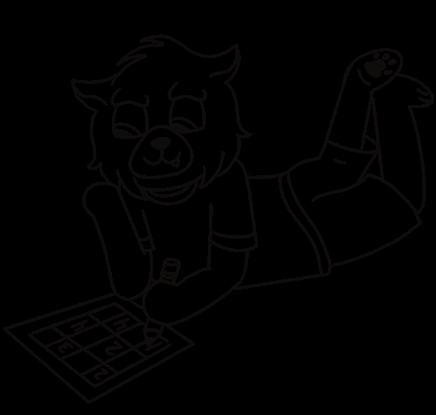
President Word Search







WILDCAT WORDS
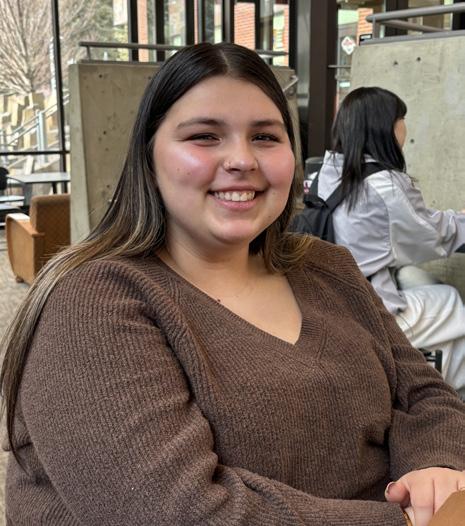

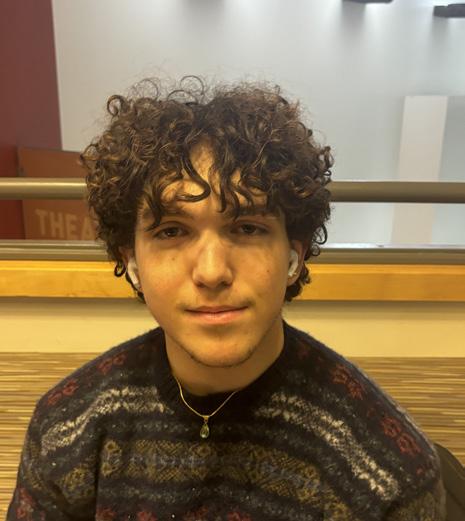
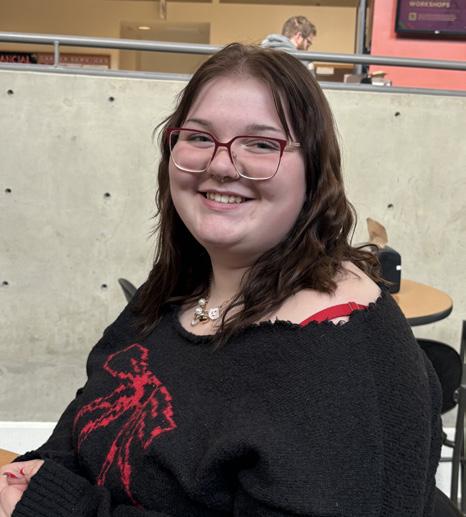

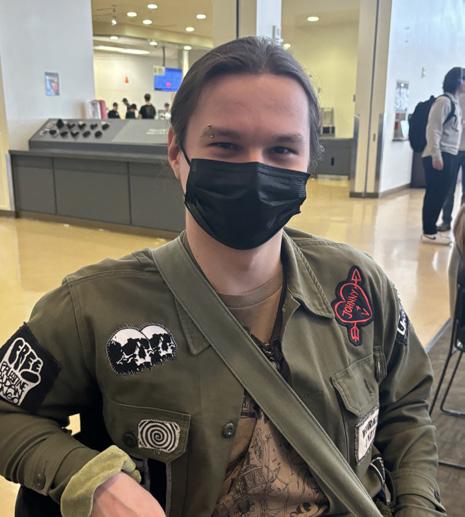
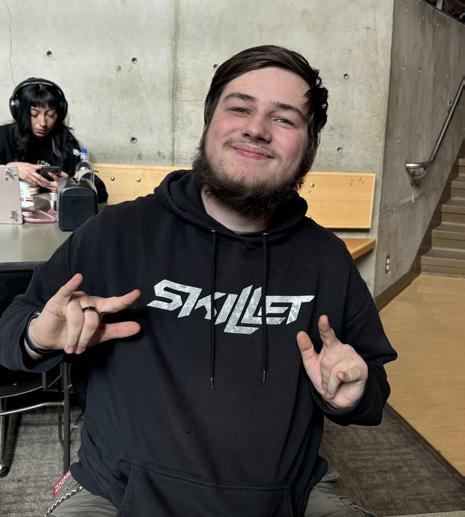

The Observer’s Official Oscars Hopes & Predictions
Best Picture
Hope: Dune: Part Two Prediction: Anora
Best Actor
Hope: Colman Domingo Prediction: Colman Domingo
Best Actress
Hope: Demi Moore Prediction: Mikey Madison
Best Animated Feature
Hope: Inside Out 2 Prediction: Flow
Best Production Design
Hope: Dune: Part Two Prediction: Nosferatu
Best Director
Hope: Coralie Fargeat Prediction: Brady Corbet
Best Original Song
Hope: Never Too Late Prediction: The Journey
Best Supporting Actor
Hope: Kieran Culkin Prediction: Jeremy Strong
Best Supporting Actress
Hope: Ariana Grande Prediction: Isabella Rossellini



